Related Research Articles
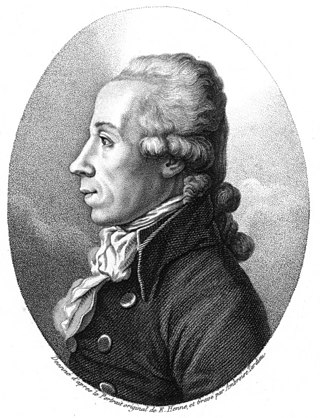
Martin Heinrich Klaproth was a German chemist. He trained and worked for much of his life as an apothecary, moving in later life to the university. His shop became the second-largest apothecary in Berlin, and the most productive artisanal chemical research center in Europe.
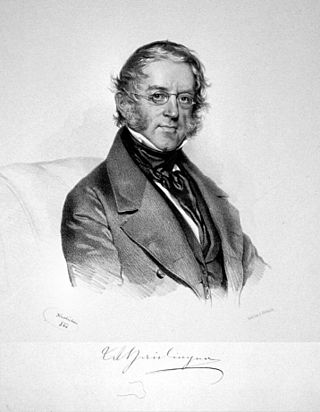
Wilhelm Karl Ritter von Haidinger was an Austrian mineralogist.

Paul Heinrich Ritter von Groth was a German mineralogist. His most important contribution to science was his systematic classification of minerals based on their chemical compositions and crystal structures.
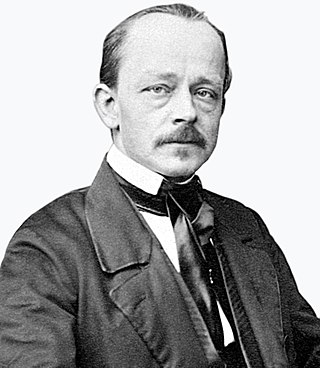
Gustav Adolph Kenngott was a German mineralogist.

Karl Friedrich August Rammelsberg was a German mineralogist from Berlin, Prussia.

Paul Niggli was a Swiss crystallographer, mineralogist, and petrologist who was a leader in the field of X-ray crystallography.

Gerhard vom Rath, was a German mineralogist, born at Duisburg in Prussia.
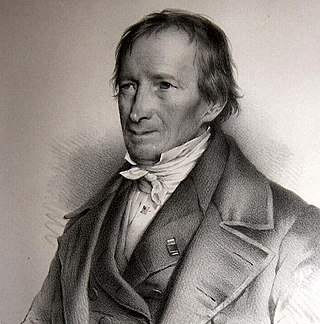
Johann Nepomuk von Fuchs was a German chemist and mineralogist, and royal Bavarian privy councillor.

Dieter Salomon is a German politician of Alliance '90/The Greens who served as mayor of Freiburg im Breisgau for two terms from 2002 until 2018.

The Gottfried Wilhelm Leibniz Prize, or Leibniz Prize, is awarded by the German Research Foundation to "exceptional scientists and academics for their outstanding achievements in the field of research". Since 1986, up to ten prizes have been awarded annually to individuals or research groups working at a research institution in Germany or at a German research institution abroad. It is considered the most important research award in Germany.
The Faculty of Chemistry and Earth Sciences is one of twelve faculties at the University of Heidelberg. It comprises the Institute of Inorganic Chemistry, Institute of Organic Chemistry, Institute of Physical Chemistry, Institute of Geography, Institute of Geology and Paleontology, Institute of Mineralogy, and the Institute of Environmental Geochemistry. Chemistry was established as a separate discipline at the University of Heidelberg in 1817 with Leopold Gmelin being appointed ordinary professor of chemistry and medicine. 1895 is considered to be the date of foundation of Geography at the University of Heidelberg as it was from this year on that lectures in physical and mathematical geography were held on a regular basis. In 1899 the first professorship in geography was established, filled by Alfred Hettner.

Baumhauerite (Pb3As4S9) is a rare lead sulfosalt mineral. It crystallizes in the triclinic system, is gray-black to blue-gray and its lustre is metallic to dull. Baumhauerite has a hardness of 3.
Georgius Agricola is considered the 'father of mineralogy'. Nicolas Steno founded the stratigraphy, the geology characterizes the rocks in each layer and the mineralogy characterizes the minerals in each rock. The chemical elements were discovered in identified minerals and with the help of the identified elements the mineral crystal structure could be described. One milestone was the discovery of the geometrical law of crystallization by René Just Haüy, a further development of the work by Nicolas Steno and Jean-Baptiste L. Romé de l'Isle. Important contributions came from some Saxon "Bergraths"/ Freiberg Mining Academy: Johann F. Henckel, Abraham Gottlob Werner and his students. Other milestones were the notion that metals are elements too and the periodic table of the elements by Dmitri Ivanovich Mendeleev. The overview of the organic bonds by Kekulé was necessary to understand the silicates, first refinements described by Bragg and Machatschki; and it was only possibly to understand a crystal structure with Dalton's atomic theory, the notion of atomic orbital and Goldschmidt's explanations. Specific gravity, streak and X-ray powder diffraction are quite specific for a Nickel-Strunz identifier. Nowadays, non-destructive electron microprobe analysis is used to get the empirical formula of a mineral. Finally, the International Zeolite Association (IZA) took care of the zeolite frameworks.
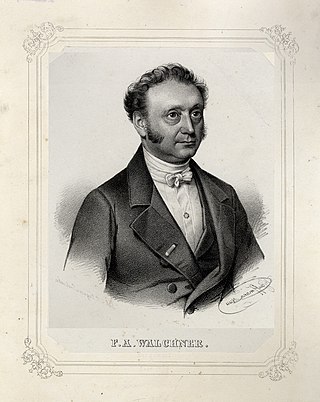
Friedrich August Walchner was a German geologist, chemist and mineralogist.
Wilhelm Ehmann was a German musicologist, editor, church musician and conductor. He founded the choir Westfälische Kantorei that toured internationally and made many recordings. He was a cofounder and director of the later Hochschule für Kirchenmusik Herford.
Friedrich August Frenzel was a German mineralogist. He was born in a miner's family in Freiberg, Saxony. In 1861 he was awarded a scholarship which enabled him to study mineralogy at Bergakademie Freiberg. There he attracted the attention of August Breithaupt who asked him to help with organising the mineralogical collections of the academy and with testing mineral samples, and to assist in the professor's mineralogical research. In 1865 Frenzel finished his studies and was awarded the title of a mining inspector. From then on, he worked for 25 years as a chemist in the metallurgical laboratories. He also lectured at the Bergakademie.
Carl Adolf Ferdinand Hintze was a German mineralogist and crystallographer.

Theodor Liebisch was a German mineralogist and crystallographer.

Gerhard Lagaly is a German chemist and retired university professor.
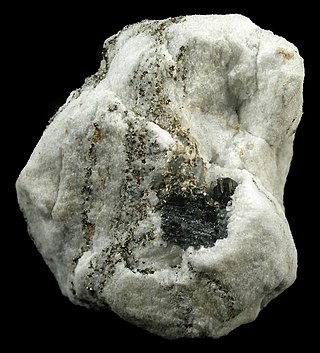
Sartorite is a lead arsenic sulfide with the chemical formula PbAs2S4 and as type locality the Lengenbach Quarry in Legenbach, Binnental, Valais, Switzerland. Historically, sartorite has been thought isomorphic to chalcostibite, emplectite, and zinckenite, but was definitively distinguished from the others in 1939.
References
- 1 2 3 4 5 6 Pabst, A. (2008). "Baumhauer, Heinrich Adolf". Complete Dictionary of Scientific Biography. Charles Scribner's Sons.
- 1 2 3 4 Rolle, Marianne. "Baumhauer, Heinrich". Historischen Lexikon der Schweiz. Retrieved 6 July 2017.
- 1 2 Fischer, Walther. "Baumhauer, Heinrich Adolph". Deutsche Biographie. Retrieved 6 July 2017.
- 1 2 Mitchell, Richard S. (3 October 2016). "Who's Who in Mineral Names". Rocks & Minerals. 57 (2): 72–74. doi:10.1080/00357529.1982.11764534.
- ↑ Kaji, Masanori; Kragh, Helge; Palló, Gábor (2015). Early Responses to the Periodic System. Oxford University Press. p. 67. ISBN 978-0190200077 . Retrieved 6 July 2017.
- 1 2 "Die Binntal-Mineraliensammlung Baumhauer Baumhauersammlung". Naturhistorisches Museum Freiburg. Retrieved 6 July 2017.
- 1 2 Roth, Philippe (2007). Minerals first discovered in Switzerland and minerals named after Swiss individuals. Achberg: Kristallografik-Verl. p. 13. ISBN 9783980756181 . Retrieved 6 July 2017.
- ↑ Hardouin Duparc, Olivier B. M. (18 January 2014). "Crystallography, Group Theory, Etymology, and 'Pataphysics". The Mathematical Intelligencer. 36 (2): 54–61. doi:10.1007/s00283-013-9426-0. S2CID 189867840 . Retrieved 6 July 2017.
- ↑ "Seligmannite". Mindat.org. Retrieved 6 July 2017.
- ↑ "Baumhauerite" (PDF). Mineral Data Publishing. Retrieved 6 July 2017.